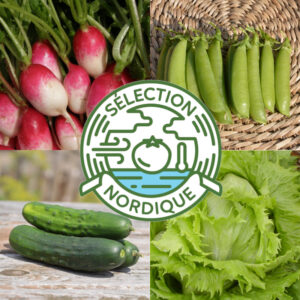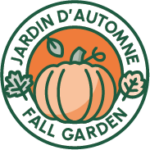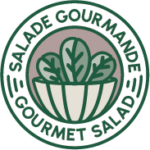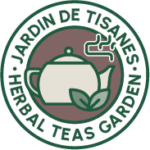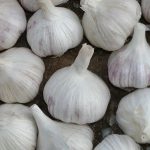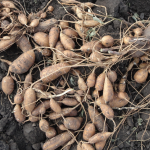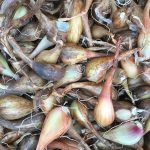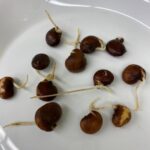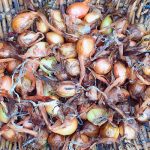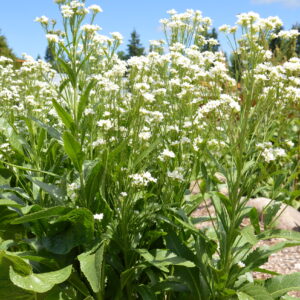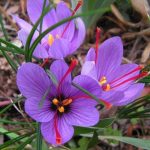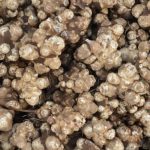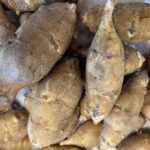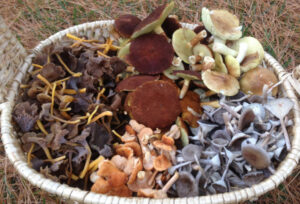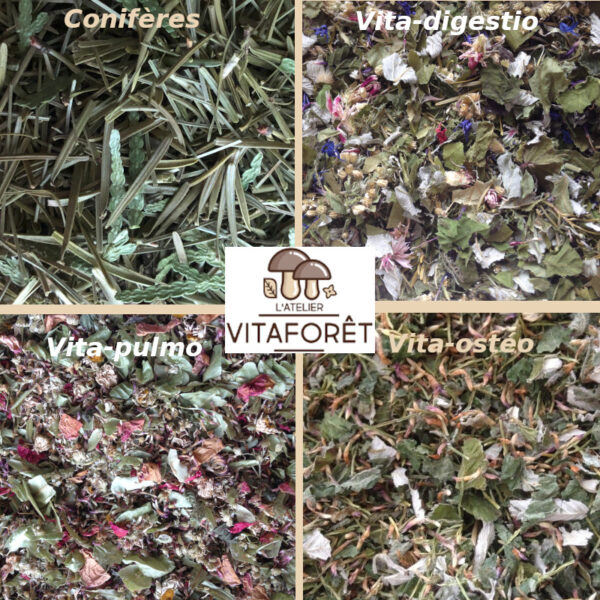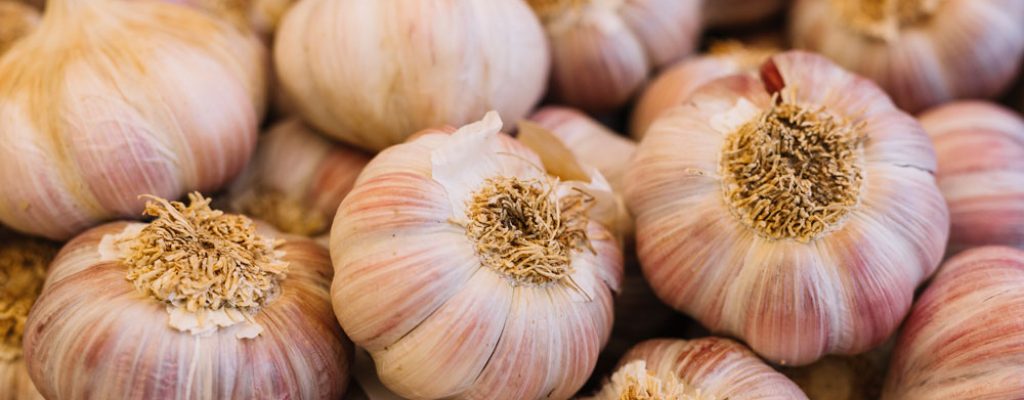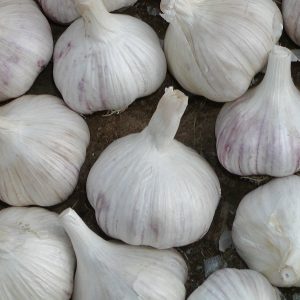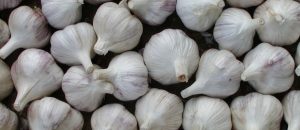Scientists do not agree on its family, whether Liliaceae (Cronquist, 1981), Amaryllidaceae (APG III, 2003) or Alliaceae (APG II, 2003).
Its culture dates back to 5000 !
The Greek historian Herodotus reports that during the construction of the pyramid of Cheops, the Egyptian workers revolted because their garlic ration had been removed. This is the first known social conflict in human history.
Which variety to choose?
Garlic varieties that are resistant to northern climate of Quebec are at hard rod (Allium sativum var. ophioscorodon), unlike soft-stemmed varieties (Allium sativum var. sativum) which grow in subtropical regions.
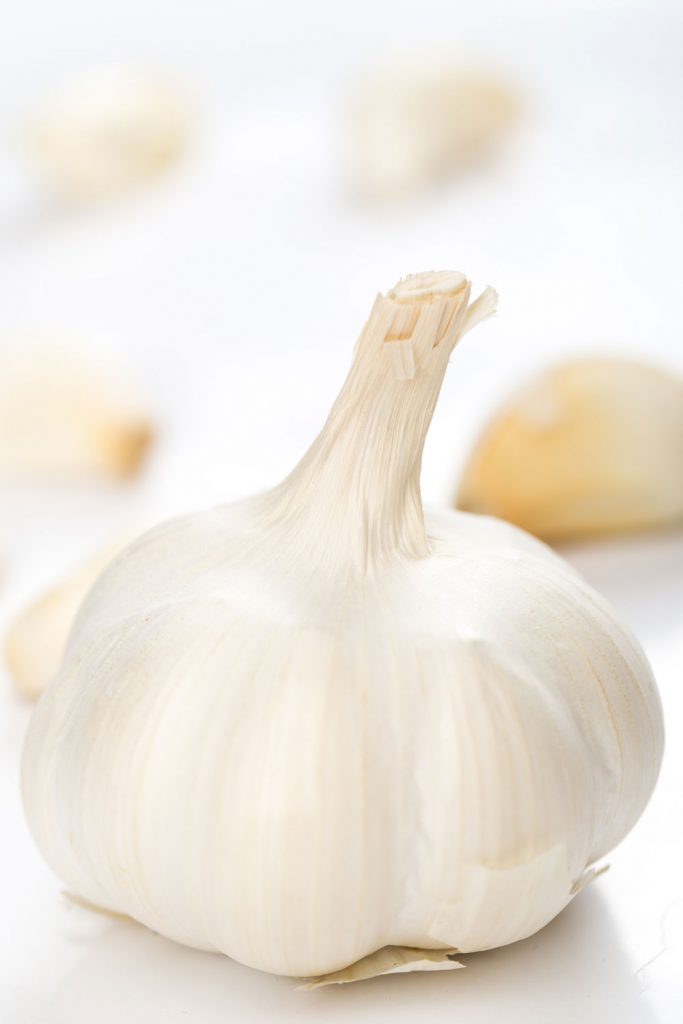
Hard-stemmed varieties are divided into 8 groups:
- Asian : excellent taste; early harvest; 4-10 cloves per bulb; conservation 5-6 months (e.g. Japanese
- Créole : mild flavor; mid-season harvest; not very tolerant of cold (to plant in spring); 5-9 cloves per bulb; conservation 9-10 months (e.g. Ajo Rojo)
- Glazed Purple Stripe : excellent in the oven; mid-season/late harvest; 9-12 cloves per bulb; shelf life 5 months (e.g. Purple Glazer)
- Marbled Purple Stripe : rich and complex flavor; late harvest; 5-9 cloves per bulb; shelf life 6 months (e.g. Siberian)
- Porcelain : very strong taste; late harvest; 3-9 cloves per bulb; conservation 5-6 months (e.g. Music)
- Purple stripe : excellent in the oven; late harvest; 10-12 cloves per bulb; shelf life 5-6 months (e.g. Chesnok Red)
- Rocambole : excellent sweet flavor; late harvest; 7-11 cloves per bulb; conservation 5-6 months (e.g. Spanish Roja)
- Turban : moderate/strong flavor; very early harvest; 5-9 cloves per bulb; conservation 5-6 months (e.g. Thai Fire)
Popular varieties
Garlic Music – Porcelain Group
Originally from Italy, we owe its presence in Canada to a man named Al Music, who brought it back in his luggage in the 1980s and gave it his name.
Variety very productive, it is renowned for the exceptional shelf life of its bulb which can reach 1 year. Each bulb consists of 3 to 6 large cloves.
These big cloves juicy covered with a pinkish-white tunic are easy to peel and have a fine, almost creamy texture. Their real pronounced and spicy garlic taste lasts a long time in the mouth.
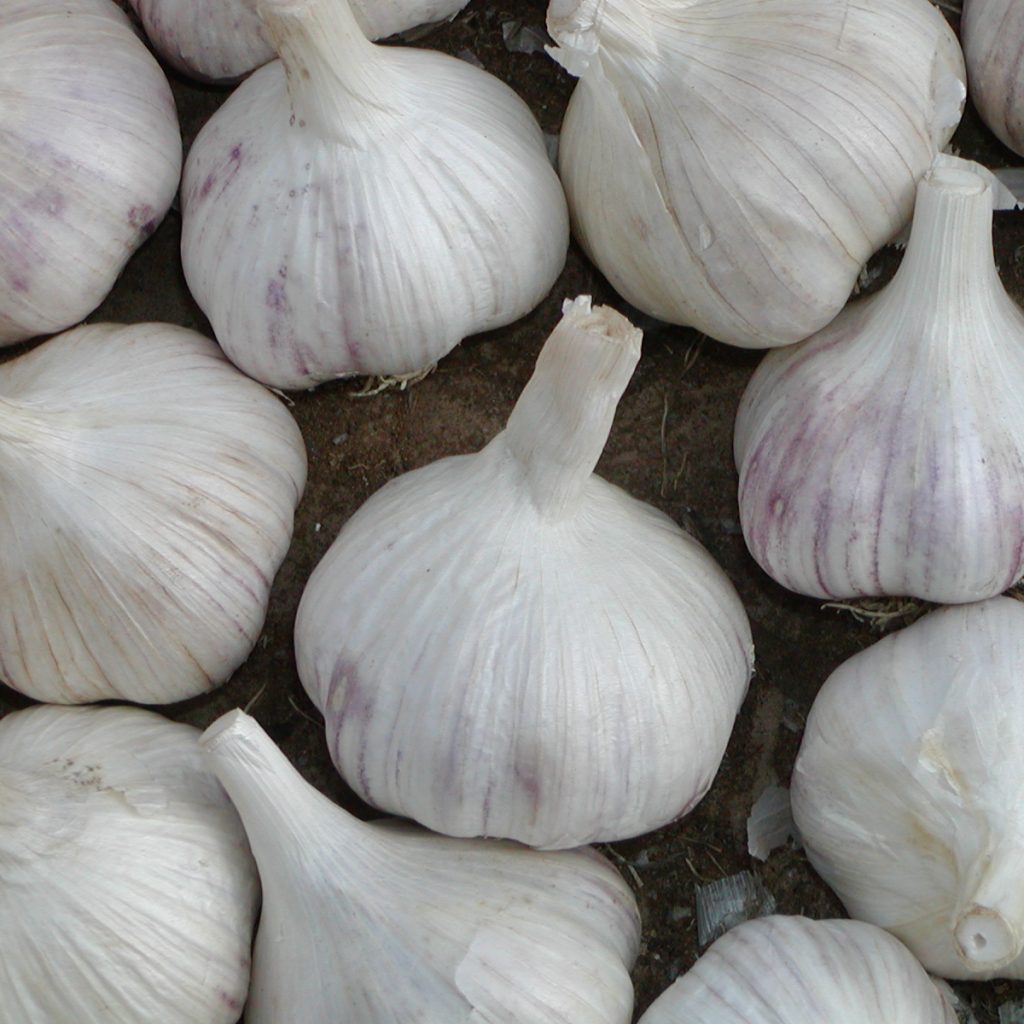
Garlic Spanish Roja – Rocambole Group
First known asGreek garlic, this ancient cultivar has been cultivated for over a century in the Portland, Oregon region. He is perfectly acclimatized cold climates and wet winters.
Many consider him to be the best in group. Its rich flavor, both strong and sweet, is a sensation in tastings.
Spanish Roja produces medium sized bulbs consisting of 7 to 10 large pods easy to peel, without these insignificant little pods which sometimes form near the stem.
Its only fault is thin outer tunic which flakes easily, which harms its conservation. We still enjoy it until winter!
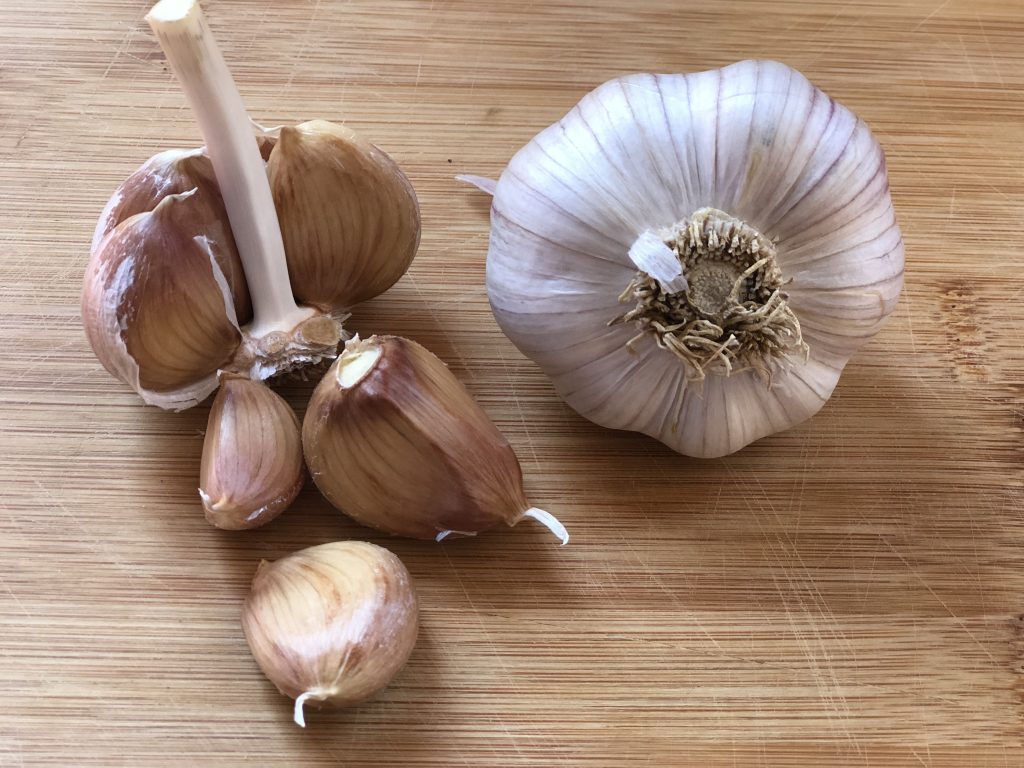
Garlic Duganskij – Marbled Purple Stripe Group
In 1989, a team of biologists from the USDA, accompanied by the genus specialist Allium John Swenson brought back specimens of this exceptional garlic from their botanical mission to Uzbekistan.
Whether found under the names Persian Star, Samarkland Purple or Duganski, it always has a biting flavor that softens to leave a pleasant aftertaste, a bit like Swiss cheese! Cooked with beef and pork, it loses its spicy taste and flavors the meat exquisitely.
This variety easy to grow produces medium-sized bulbs composed of 7-10 cloves which are harvested mid-season. In good storage conditions, the bulbs keep well until January.
The Duganskij variety appears in the catalog of Canadian Heritage Seeds.
Garlic cultivation in Quebec
In autumn, either 3 to 6 weeks before the ground freezes, the cloves (pods) are planted individually, point upwards, in a soil enriched with compost. If leaves appear before winter arrives, there is no need to worry.
La depth planting distance is 5-8 cm and the purchase between each clove, 12-15 cm.
Then, we cover the soil of the plot by 1-2 cm compost ; in addition to stopping erosion and slowing the proliferation of weeds, compost protects cloves and fertilizes the soil.
The yield is thus higher the following year.

As soon as the earth warms up spring, the narrow, erect leaves with a garlic scent appear. Keep your plot free of weeds, because garlic poorly tolerates competition.
Also, when the rain is rare, we must water so that the bulbs reach a good size: stop watering for 2 weeks before harvest of the bulb.
In July, a flower stem corkscrew develops. This edible stem is harvested leaving the leaves intact when it forms 2 loops. Don't delay doing this, because it takes up the energy the bulb needs to grow.
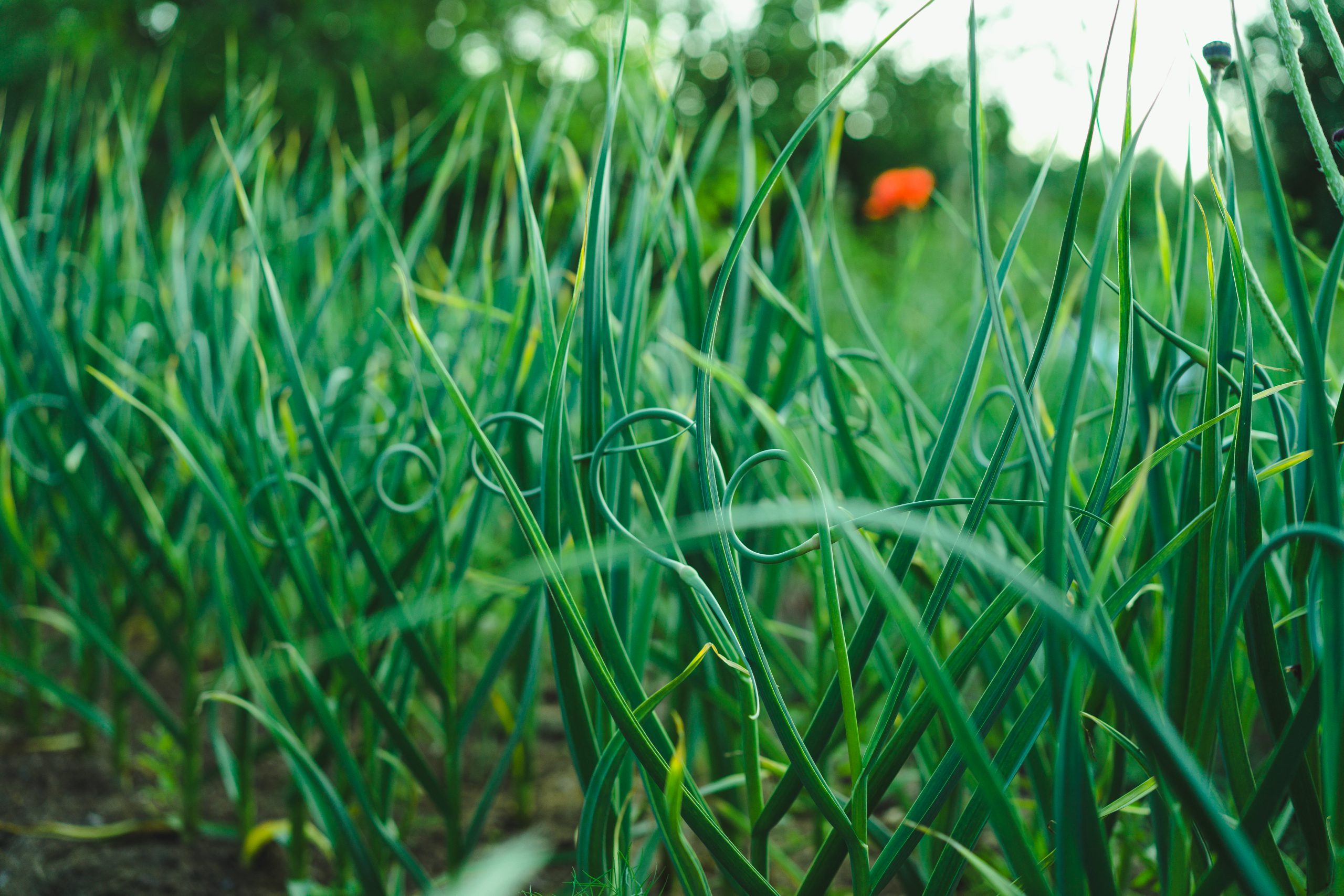
Harvesting and storage
The harvest takes place between mid-July and mid-August, when the lower leaves begin to wither and point towards the ground; there are then only 5-6 leaves still green on the stem.
Do not be too long to harvest the bulbs, because from this stage, the tunic which protects them cracks and disintegrates more quickly.
To store well, the bulbs must be left to dry on a grid or in suspension, in a well-ventilated place, in partial shade. Drying may take 2 to 3 weeks.
On cut the stem to 5 cm, as well as the roots, taking care to keep at least 4-5 layers of dry peel.
The ideal place for storing bulbs should be well ventilated with a temperature of 20°C or more.




